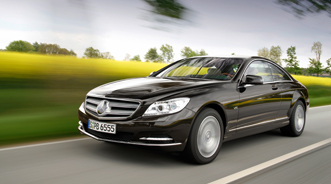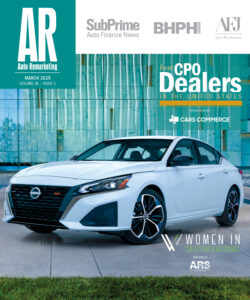Daimler Chair Says Company on Growth Trajectory During Annual Shareholders Meeting

Dieter Zetsche, chairman of the Daimler AG board and head of Mercedes-Benz Cars, told shareholders today that his company has emerged from the financial crisis and has now turned the corner to growth.
"We are on a path of profitable growth," Zetsche told about 5,200 shareholders at the International Conference Center in Berlin. "We announced that we would emerge from the crisis with a lot of torque. We have kept our word: Actual developments were even more positive than expected.”
In the first three months of 2011, the Daimler Group sold more vehicles than in the prior-year period. First-quarter unit sales by the Mercedes-Benz Cars division grew by 12 percent compared with the first quarter of 2010.
This growth is being driven by nearly all automobile classes, according to the company. Unit sales of the S-Class were up by 24 percent and the E-Class sales were up by 18 percent.
Meanwhile, the product offensive started by Mercedes-Benz Cars in 2010 is beginning to peak, Zetsche noted. The launch of the new-generation C-Class and the new SLK in early 2011 will be followed in autumn by the new M-Class and by the new B-Class, the first of four new models in the compact segment.
The company is anticipating unit sales of more than 1.2 million solely by the Mercedes-Benz brand in the full year. Including smart, unit sales should exceed 1.3 million, the automaker is forecasting.
"We want to make our anniversary year a record year as well," stated Zetsche.
With their inventions 125 years ago, Gottlieb Daimler and Carl Benz laid the foundations for the present Daimler Group.
Continuing on, he said the Daimler Trucks division sold 90,000 vehicles in the first quarter, representing an increase of 27 percent over the prior-year period. In Europe, unit sales grew above all in Germany, France and Turkey, he added. Sales by Trucks NAFTA increased by 32 percent, while increases were also recorded in Latin America.
The volume of orders received by Daimler Trucks in the first quarter of 2011 was 65 percent above the prior-year level, the automaker pointed out. With the exception of Japan, the upswing is expected to accelerate in all major markets in the coming months. The NAFTA market, in particular, is developing more positively than was assumed at the beginning of the year, Zetsche said. Daimler now anticipates market growth of 30-35 percent.
With an increase in unit sales of 16 percent, Mercedes-Benz Vans also achieved strong growth in the first quarter.
At Daimler Buses, the development of major markets in the first quarter was weaker than in the prior-year period. But the division expects to produce significantly more buses in the second half of the year.
Additionally, Daimler Financial Services expanded its new business by 11 percent and its contract volume at the end of March was 3 percent higher than a year earlier, the automaker reported.
"For more than a month now, the world has been trying to come to terms with the terrible threefold disaster that struck Japan: First there was the earthquake, then the tsunami, and finally major serious problems at the nuclear power plant in Fukushima. And the full consequences cannot yet be predicted," stated Zetsche. "The situation has shocked and greatly affected all of us."
With regard to the impact on operations outside Japan, Daimler reported it has so far not seen any noteworthy impact on production.
The automaker’s management staff is assuming that global automotive markets will continue to expand significantly in 2011. Against this backdrop, Zetsche affirmed the forecasts for 2011: On the basis of the current situation, the company expects revenue in full-year 2011 to be higher than in the prior year. EBIT from the ongoing business should also be significantly higher than the result of Euro 7.2 billion achieved in 2010, he added.
In the coming years, Daimler said intends to further strengthen its profitability and to stabilize it at a high level. The chairman confirmed the group’s return targets, which are to be attained on a sustained basis as of 2013. Daimler aims to achieve an annual average return on sales in the automotive business of 9 percent across all market and product cycles. This figure is based on return targets for the individual divisions of 10 percent for Mercedes-Benz Cars, 8 percent for Daimler Trucks, 9 percent for Mercedes-Benz Vans and 6 percent for Daimler Buses. For the Daimler Financial Services division, the group aims to achieve a return on equity of 17 percent.
Zetsche said he has no doubt that the structural upheaval in the automotive industry will continue after the economic crisis.
"The focus of regional growth is shifting to Asia and we are experiencing a technological paradigm shift toward electric mobility,” he pointed out.
He believes it is necessary to play a role in shaping this "dual transformation" without neglecting the core business and without putting all of one’s eggs in one basket in a volatile world.
By 2015 at the latest, the Mercedes-Benz brand is slated to pass an annual sales mark of 1.5 million cars. Daimler Trucks aims to sell half a million vehicles annually as of 2013. The group’s planning focuses on significantly expanding sales of cars and commercial vehicles both inside and outside the triad markets (Western Europe, North America and Japan).
Daimler has also made further progress with the fuel consumption of its vehicles with conventional drive systems, the chairman pointed out. Despite the traditionally high proportion of large automobiles in the automaker’s model mix, the CO2 emissions of the car fleet sold in Europe were reduced in 2010 to an average of 158 grams per kilometer, according to Zetsche.
In 2011, the fleet’s CO2 value will be reduced significantly once again, he added. The combination of new, highly efficient engines and the new seven-speed automatic transmission with a start-stop system reduces fuel consumption by up to 31 percent, depending on the model, he explained.
By 2016, Daimler said it plans to undertake a further reduction in CO2 emissions to achieve an average of 125 grams per kilometer for the entire car fleet. Vehicles with hybrid drive, a combination of internal-combustion engine and electric motor will make an increasing contribution to meeting this target.
The group sold a total of 1.9 million vehicles in 2010. That was 22 percent more than the prior-year level, which was affected by the global economic and financial crisis.
Group revenue increased by 24 percent to Euro 97.8 billion. Group EBIT amounted to Euro 7.3 billion and net profit was Euro 4.7 billion. In 2009, the company reported EBIT at a loss of Euro 1.5 billion, and the company showed a net loss of Euro 2.6 billion.
Given the signs of growth, the board of management and the supervisory board recommended to the shareholders at today’s annual meeting that a dividend of Euro 1.85 per share be paid out. This constitutes a total distribution of approximately Euro 2 billion and a dividend ratio of 40 percent of the group’s net profit.

 View The Latest Edition
View The Latest Edition

